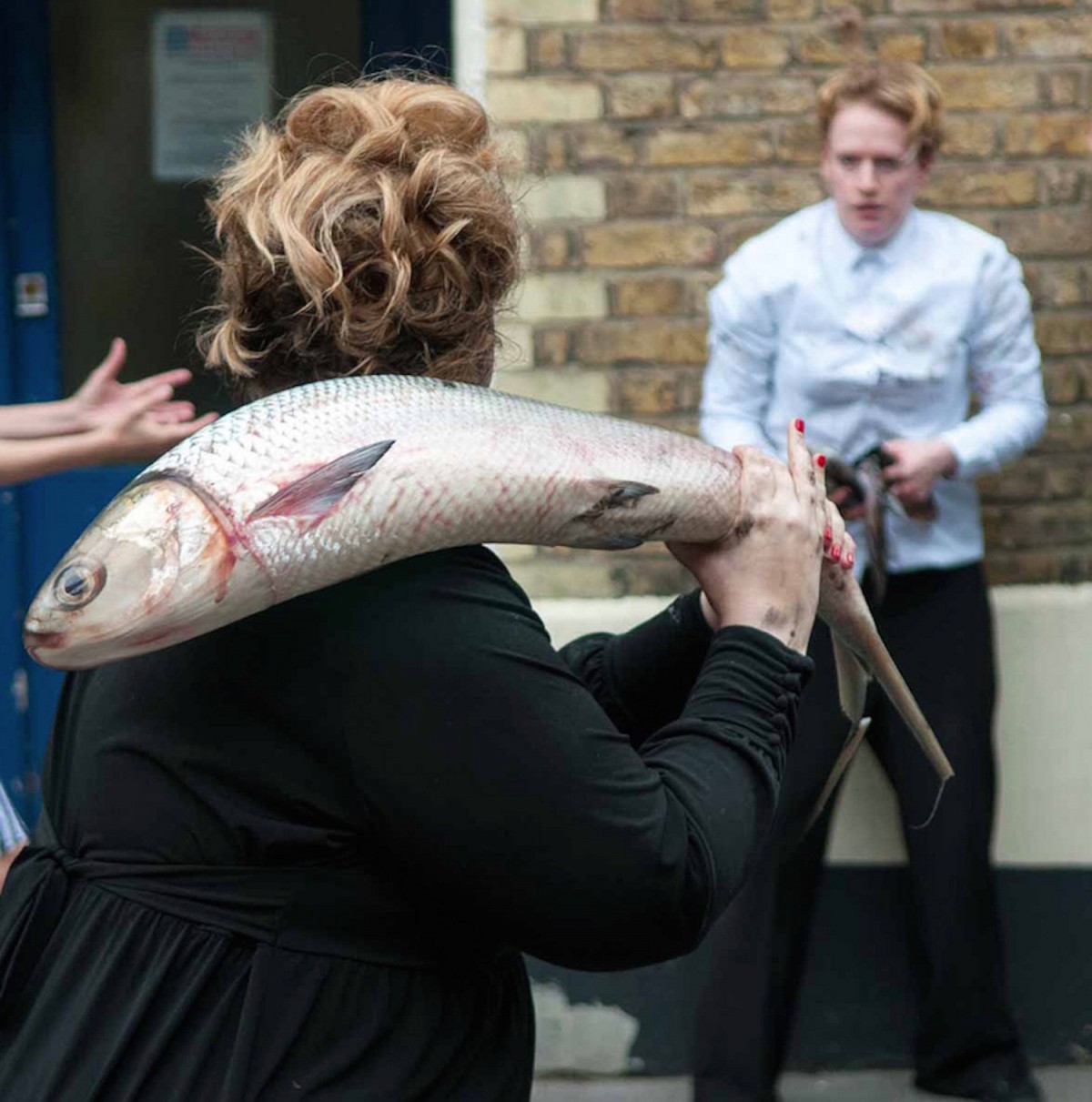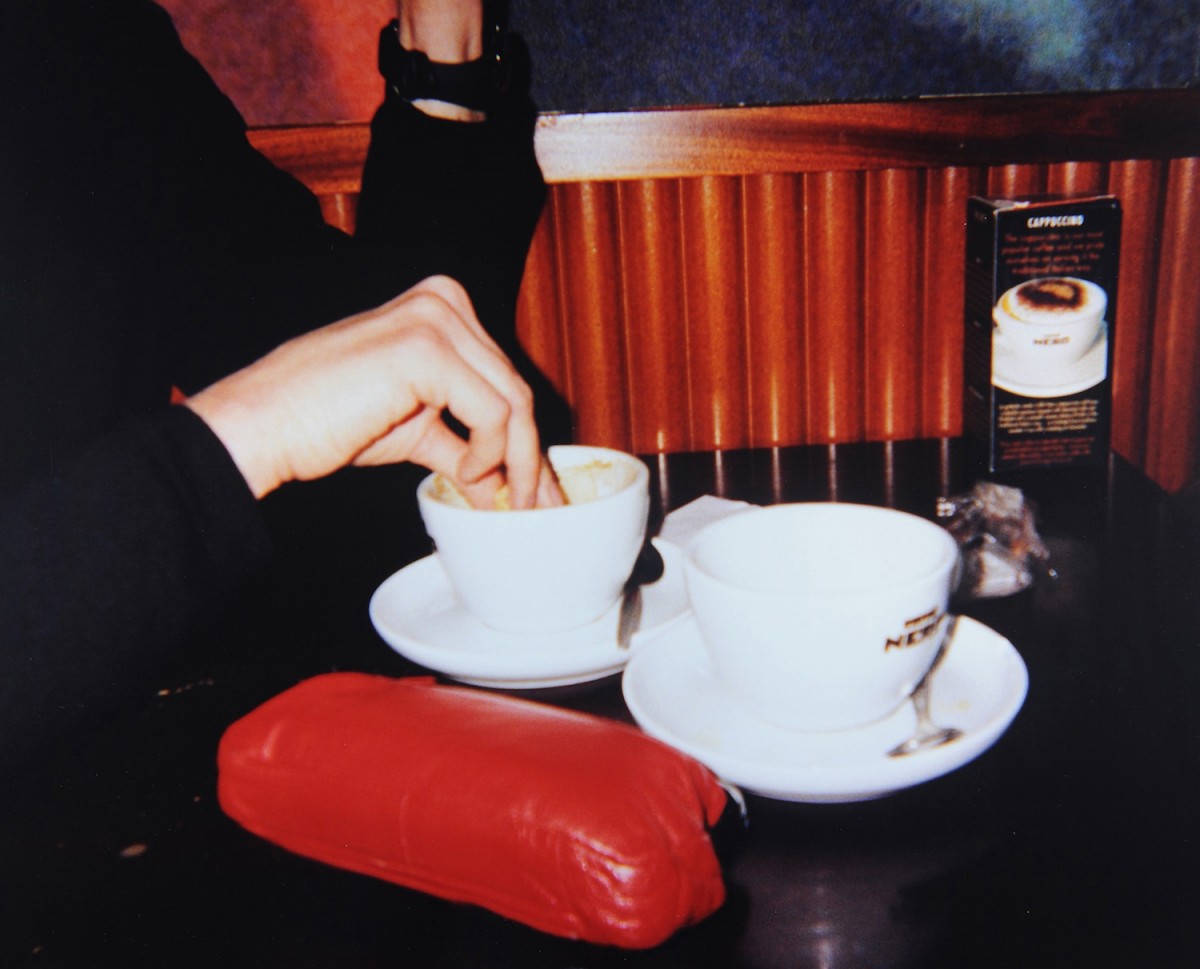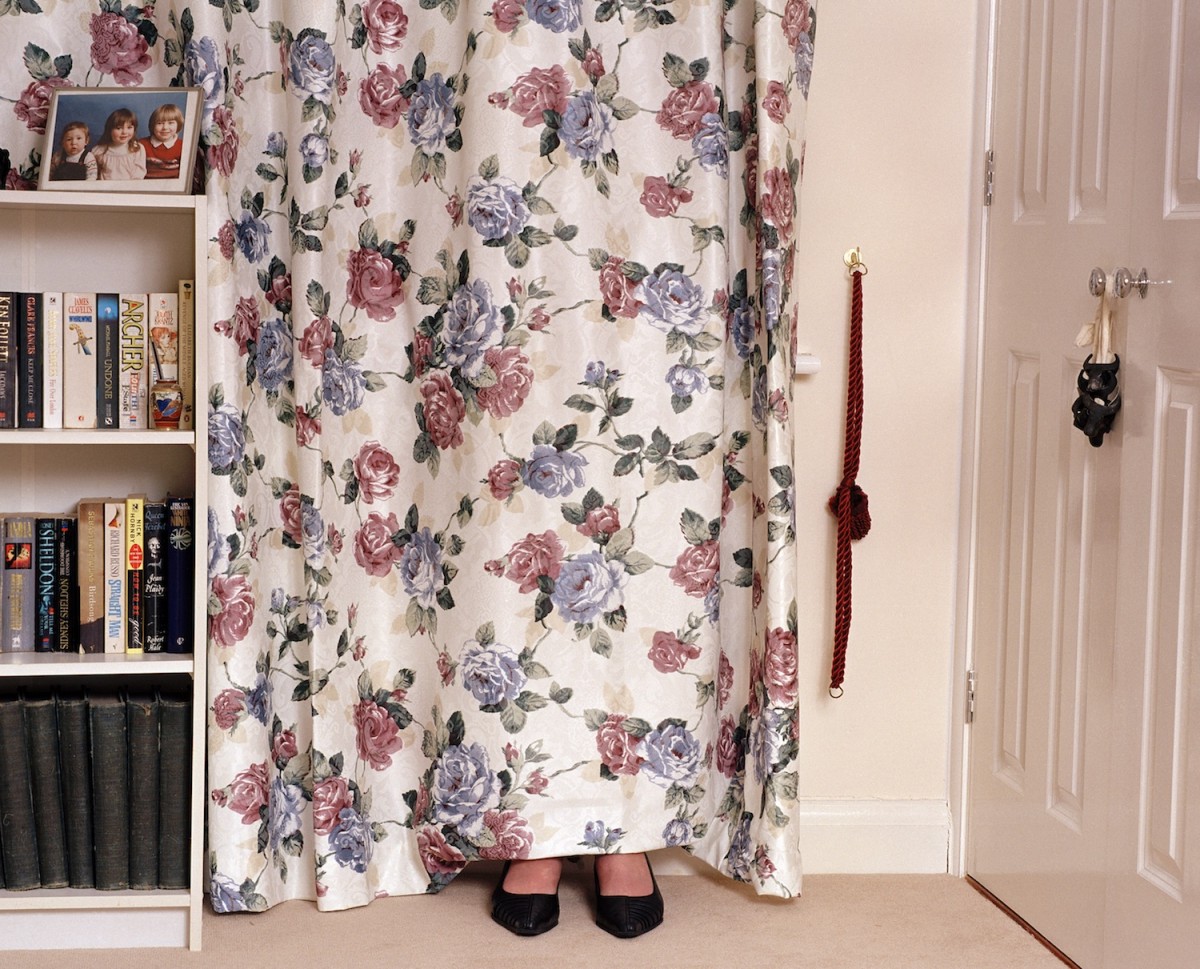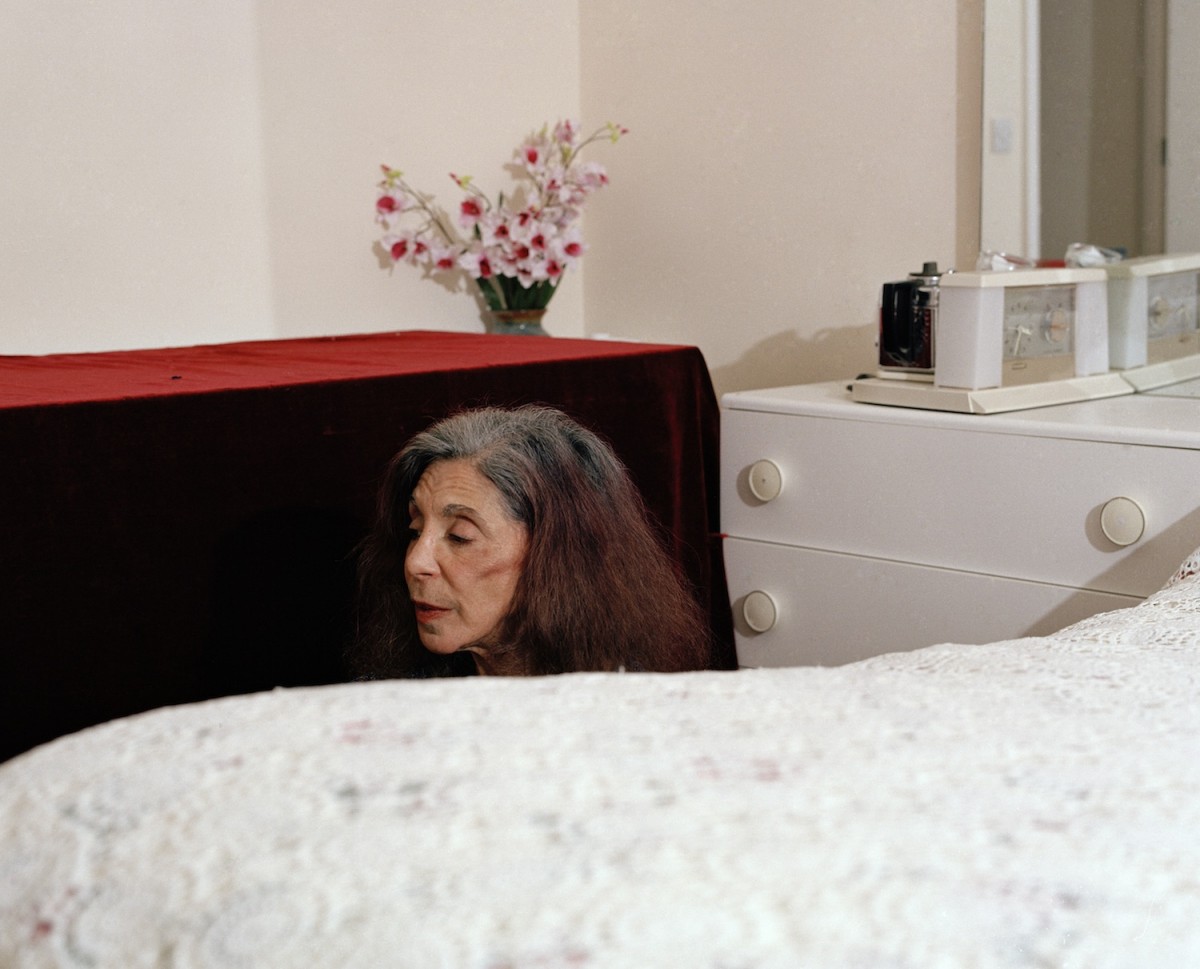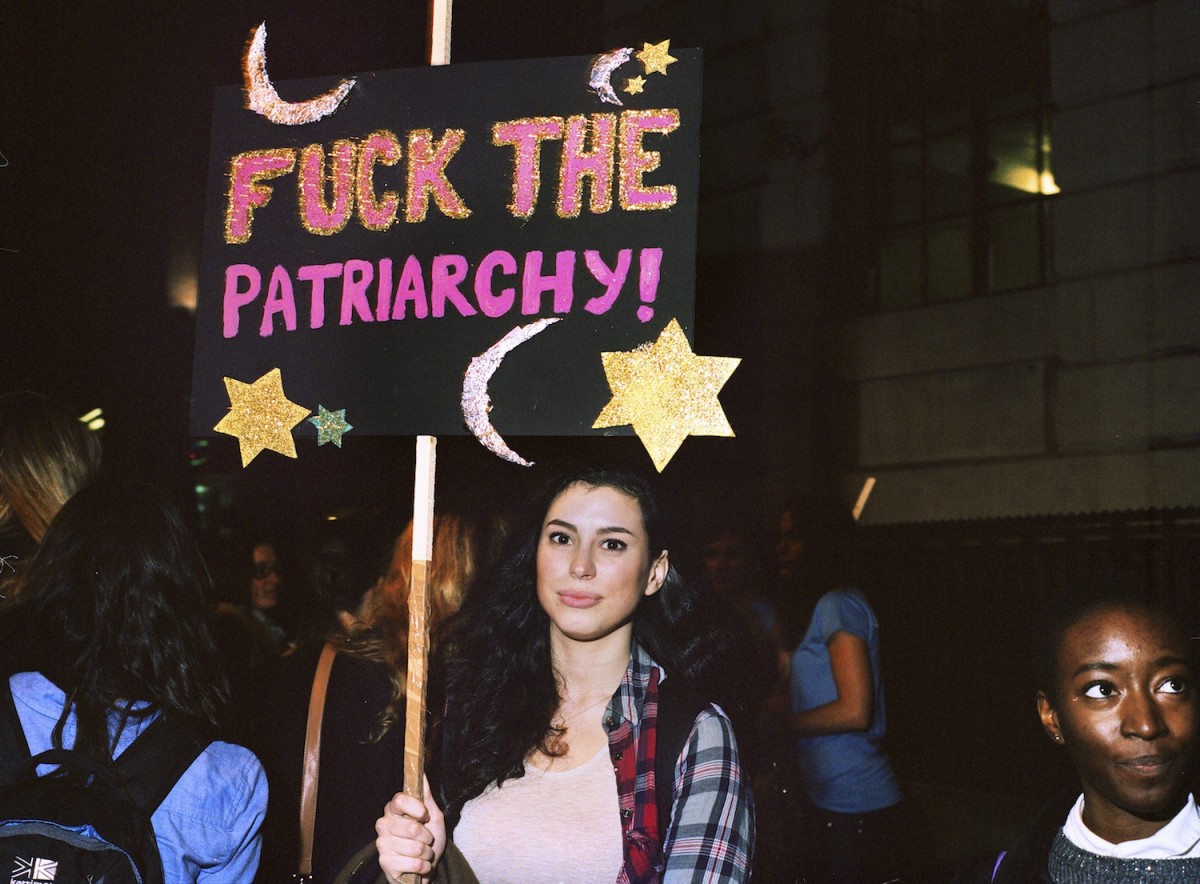Max Houghton weaves a historical and contemporary view through photograph and women photographers who use wit to disarm.
The role of women in photography is vital, yet often discussed only in relation to the work of men, who dominate the medium. I sought a territory that belonged to women in particular, which could also underscore the need to delineate a space in discourse for women about women. I found it in a word: wit. Women have used wit for centuries as a strategy of resistance; a knowing employment of its capacity to, at once, foster understanding and to wound, in its inevitable exposure of the absurdity of the patriarchal balloon it punctures.
Is this a feminist articulation of women and wit? Could it be otherwise? Let’s see … Racist, sexist, fascist. Artist, philanthropist, escapologist. The suffix ‘ist’ means ‘one who’ or ‘that which’ … but looking at these two word groups, it is not so simple. ‘Ist’ seems to convey a notion of expertise, but the first group carries a negative connotation. It is among this group of ‘nasty people’ that the feminist sits in the minds of many.
Imagine her surprise!
Her desire is not for separatism, nor for dominance, but for equality; that essential Enlightenment principle for which women and men have fought and died. This is not an extreme position. By utilising wit to make her point, a woman can leapfrog over the stagnant pools of misogynist outrage, in which lesbian and feminist are synonyms, and, just as deftly, over the more prosaic and prolific structures of everyday sexism.
I have worked in photography for 15 years, during which time, men, to borrow Rebecca Solnit’s phrase, have explained things to me. Much of this has been enjoyable; fascinating; necessary. Women do not often proffer their knowledge in the same way. I have looked at, thought and written about hundreds of bodies of work by women and men, and could not, much of the time, identify its author by gender on a synaesthetic blind-tasting. During the increasingly frequent gatherings, panels and symposia for women in photography, often inspired by work curated by Fiona Rogers for her Firecracker platform, conversations before and after presentations were hallmarked by an undercurrent of energy, excitement and a surging wit. In her essay ‘Feminist Wit—Dare to be Devastating’ (from which the title of this piece originates), Nina Power analyses this phenomenon:
The witty women, and there are many throughout history, occupy a role that is hard to pin down. They take nothing seriously because they can see through structures and mock the image of individuality that would see ego and arrogance take centre-stage. That is not to say that what work their wit does reveals nothing of importance—on the contrary, it highlights everything in a flash, which is precisely why it is so unsettling […] Feminist wit is the strategy to end all strategies because it speaks from the vanishing point that is exactly midway between the individual and the collective, the structure and the specific situation. You will laugh, but you will also feel wounded, and it is from such wounds that the real work of politics begins.1
In order to get to ‘the real work of politics’ it was necessary to locate such wit within these women’s work, too. Wit, despite its etymological roots, from both witan (to know) and videre (to see), is most closely associated with verbal agility. And though a photograph is rarely without language, particularly within the contemporary documentary tradition in which I work, I was interested in its visual expression too. Who are today’s Claude Cahuns or Madame Yevondes, Martha Roslers or Carrie Mae Weems? I can only offer a fraction of the answer here.
[ms-protect-content id=”8224, 8225″]
Gemma Marmalade’s work is, like her name, a source of delight, and more evocative of Cahun’s transgressive spirit than that of Cindy Sherman (which is frequently cited as a natural lineage). Fish Wives (Sweet Science) takes the form of a live re-enactment of a symbolic annual ritual that takes place on the Italian island of Linosa, on the feast day of Saint Marina, patron saint of the sea, fertility and suffering. In order to establish their position in the local hierarchy, the matriarchs of two rival clans flagellate each other with fish, until one submits or a victor emerges. Marmalade takes to the role of fishwife with gusto, slapping and pummelling her rival in the streets, until her victory is assured, at which point she gathers the discarded fish, with which she will later create a dish for her defeated adversary to eat. The final stage of the ritual is the eating of the humble pie—andare a Cannosa—from which practice this phrase originates. As the fish fly, an opera singer is performing ‘Vissi d’arte’ from Puccini’s Tosca—to die for art.
Documentation of Gemma Marmalade, Fish Wives (Sweet Science), 2013. Photographs by Will Jennings, Fiona Clarke and Andrew Smith.
Documentation of Gemma Marmalade, Fish Wives (Sweet Science), 2013. Photographs by Will Jennings, Fiona Clarke and Andrew Smith.
Documentation of Gemma Marmalade, Fish Wives (Sweet Science), 2013. Photographs by Will Jennings, Fiona Clarke and Andrew Smith.
What are we to make of these two women, filmed and photographed in such splendid disarray, for art’s sake? The word fishwife, the dictionary informs us, is ‘a coarse-mannered woman, prone to shouting’. We are witnessing a humorous display, certainly, but surely more slapstick than wit? But of course: Marmalade is playing with us. There is no charmingly authentic Italian ritual. No fish-bashing. Definitely no humble pie. Her intention has been to invite the spectator to question not only what kind of behaviour is sanctioned as typically or suitably female but how we behave on seeing this role subverted. How does the female eye view women ‘being coarse’ in public? The wit of this work reached a peak when Wikipedia detailed the Linosan ritual (since deleted). Odds are that it was updated by a man, as nine out of ten Wikipedia editors are male. Ha ouch ha ouch ha.
In Break of Day, published in 1928, Colette writes ‘Man, my friend, you willingly make fun of women’s writings because they can’t help being autobiographical. On whom then were you relying to paint women for you…? On yourself?’2 The ability of women to draw on their own lives as a source for their artistic practice is perhaps less frequently derided, but may yet be described by that catch-all term ‘domestic’, as though it might sit on a shelf with a bottle of bleach. As though the female experience could only be contingent to something more worldly. As though love might be less important than war. Anna Fox’s autobiographical work that began with Cockroach Diaries, and continued in her Notes from Home series, is a playful, gently witty photography that exists in parallel to the work that identified her early in her career as one of the vibrant young colourists alongside the likes of four very famous male photographers, whom I shall I not name here (but three of the four are called Paul). It was the latter mode that sealed her reputation in the art world (an issue of reception, not intent), much more so than the work that told the specific story of the female human being within the male structure of the art world. Yet along with projects like Sian Bonnell’s Everyday Dada, in putting ‘women’s work’ centre stage is an expectation that the job of raising a family, of feeding children, is understood as (a) vitally important, (b) almost always undertaken by women, (c) valid as a subject for art as sex or death and (d) frequently a necessity if you are a woman and an artist with children. Hang the cockroaches in the Tate and be damned.
Sophie Calle’s Take Care of Yourself is among the most personal work I think it may be possible to make—save Mona Hatoum’s vagina—yet its sharp wit serves to shield the artist from too painful an exposure, and reframes the experience of, well, in the language of women’s magazines, being dumped. As is now well known, though always worth recounting, Calle took the parting words of her lover literally, as he ended their relationship by email. She took care of herself in the way an artist would—by making art—and displayed his words, along with analyses of those words from over 100 female professionals, in the French Pavilion at the 2007 Venice Biennale. Imagine his surprise, on reading that a forensic psychiatrist considered him a ‘twisted manipulator’. Calle has inevitably been criticised for bringing such a personal correspondence into her work, but its art lay in the overwhelming feminine response to a thoughtless male sentence. One of the invited respondents was a markswoman, who could be heard firing shots into the offending words in the next room. Ouch. But I’m still laughing.
In her series The Married Man, Natasha Caruana also mines her private life in order to expose the accepted dynamic of male–female relations: dating websites for married men who wish to conduct affairs. Caruana used a throwaway camera to frame non-identifying details of their date. The complicity of the female as well as the intention of the artist in this practice serve to further complicate an ethical stance, as did the knowledge that Caruana’s wider photographic practice also focused on a two-year affair in which the artist was The Other Woman. The abject air exuded by the resulting photographs reveal that if glamour were ever on the menu, it was not a dish that travelled well. What this employment of wit exposes is not a judgement on a religious idea of adultery as a sin, nor on treacherous men, or their beleaguered and invisible wives, but a comment on the transactional nature of relationships that begin thus. Caruana excels in the role of woman as instigator, as a sexual being with her own desires and moral code; one that continues in her two latest series, Love Bombs and Coup de Foudre/At First Sight. Wit is the dark heart of her anatomy of love.
Natasha Caruana, Penny, from the series The Other Woman, 2005
As well as its more conceptual incarnations, wit is flourishing at one of photography’s frontlines: pictures of protest. Polly Braden is photographing a series of stitch-ins this summer, organised by the Craftivist Collective and ShareAction, in which a group of mostly middle-aged, middle-class Marks & Spencer customers will sew messages onto handkerchiefs that will be presented at the company’s AGM, expressing their dissatisfaction with the fact that their favourite brand does not pay a living wage to its staff. Braden’s images show a gentle British wit at work, but one that, like the needle, has a very sharp point.
Holly Falconer has also been en parade. She began photographing the Neston Ladies’ Day Parade, which has been taking place since 1814, in honour of the Neston Female Society, established during the Napoleonic Wars as a means of mutual self-help for women who were experiencing hardship. Two centuries later, it’s the only female friendly society in the UK. The women who march carry a banner that declares ‘Bear Ye One Another’s Burdens.’ Falconer’s gaze here is an interesting one. It is clear she respects these women—and children—and their tradition, yet she captures a slight uneasiness too. The face of one woman is obscured by streaming ribbons, unfurling from the banner of another. Falconer is playing with the idea of lost identity as she discovered that marriage is a prerequisite for membership of the Female Society.
Holly Falconer, from Parade. Taken at Neston Ladies’ Day, Cheshire, 2014
The similarity of the dresses worn by the young marching girls to bridal attire was also a source of some discomfort for Falconer, and this unease is mirrored on the faces of some of the girls. However, she felt so inspired by this event on the whole that she decided to embrace the subject with Parade, a body of work on women marching together, whether for Gay Pride, against Page 3 and the ‘period tax’ (VAT on tampons), or with an even more distilled message—my own personal favourite—admittedly more sledgehammer than rapier: ‘Fuck the Patriarchy’, complete with glitter stars and moon drawn on the placard.
Holly Falconer, from Parade. Taken at Reclaim the Night, London, 2014
There is much work to be done, to consider more fully the role of wit in photography as an act of resistance by women. I am looking forward to testing this idea internationally; I very much doubt wit is an exclusively British phenomenon, though it has a fine tradition here. For now, a couple of brief thoughts have coalesced. In terms of a shared aesthetic, if there is one, few of these series conform to traditional ideas of ‘beautiful’ photographs. The element they share is perhaps the use of the photograph as a way of seeing, as opposed to becoming an object, or even any kind of commodified end in itself. These practitioners understand well the performative nature of the photograph, and summon it to do rather than to be.
A question raised by this introductory exploration is why the most transgressively witty work is created by women who identify as LGBT. It is easy to imagine how Gemma Marmalade’s latest work, in which she explores the possibility that people of a homosexual persuasion may be more likely to have a visceral impact on the growth of plants, might be misconstrued, that is to say, be believed. I am reminded of how Cahun’s contribution to Surrealism was so little acknowledged at the time that, in early books on the movement, she was referred to as a he. This is of course in part wonderfully apposite. My instinct, only tested out a little in an email exchange with Holly Falconer, is that women who do not sleep with men are free from the invisible but pervasive man-pleasing trap, and therefore can see the structures of male-dominated society more vividly, and dismantle them more effectively.
The wit employed by these image-makers is perhaps an intelligent and more subtle form of anger; sparkling arrows honed from an amorphous rage at the prejudice, injustice and inequality that make feminism both a necessary and humane response to the world. As a device, photographic wit exposes the absurdity of the status quo. Catching sight of it thus illuminated, we can see the possibility for metamorphosis. Now we just need to go and explain it to the men.
<notes>
1 Nina Power, ‘Feminist Wit—Dare to be Devastating’, Strike! Magazine (21 May 2014), http://strikemag.org/feminist-wit/ (11 July 2015).
2 Colette, Break of Day, Farrar, Straus and Cudah, 1961 (trans Enid McLeod), pp19
[/ms-protect-content]
Published in Photoworks Annual Issue 22, 2016
Commissioned by Photoworks

